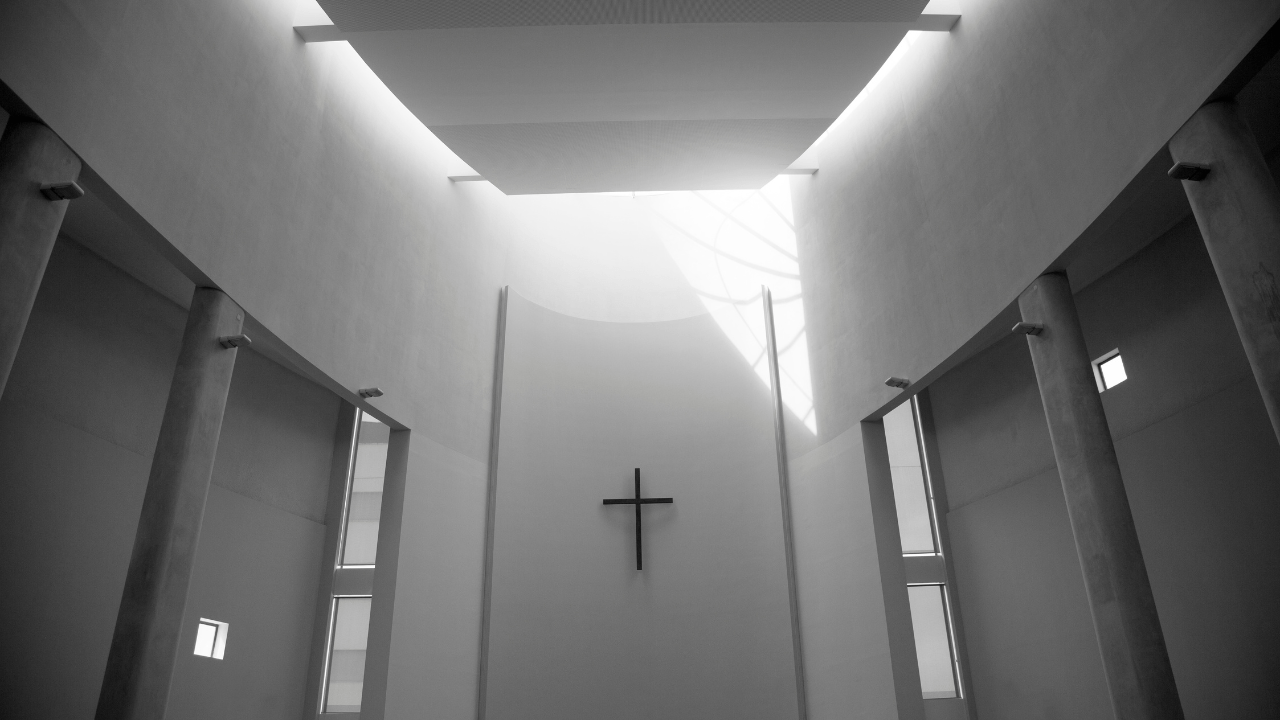No products in the cart.
Christian Symbols in the Architecture of Modern Churches
ADVERTISEMENT
This post contains paid and/or affiliate links. I make a small commission at no extra cost to you. Please see our Privacy Policy.
Captivating the world of Christian symbols in modern church architecture. In this article, we will delve into the significance of these symbols and how they contribute to the spiritual experience within these sacred spaces.
From using intricate designs to incorporating meaningful elements, modern churches embrace a blend of ancient tradition and contemporary design. Join us as we uncover the symbolism hidden within the architecture that inspires faith, connects worshipers to biblical meaning, and creates a genuinely divine atmosphere.
The Importance of Symbolism in Church Architecture
Symbolism plays a crucial role in the architecture of churches, contributing to the more profound meaning and significance of the worship experience. In every aspect of church design – from the overall plan and layout to the intricate decorative elements – symbolism is essential in conveying a spiritual message and connecting worshippers with their faith.
Without symbolism, a church would be a physical structure without spiritual significance. Through the use of symbols, the church becomes a sacred space, inspiring and uplifting the faithful.
Symbols in church architecture create a sacred atmosphere, fostering a deep reverence and connection with God. They act as a visual language, conveying biblical narratives and spiritual truths. Whether through the placement of the Holy Table, the choice of decorative motifs, or the use of specific architectural features, symbols in church architecture enhance the worship experience and evoke a more profound spiritual response.
The Multifaceted Role of Symbols
Symbolism in church architecture serves various purposes, each contributing to the overall worship experience:
- Conveying Biblical Meaning: Symbols help to convey biblical narratives, themes, and teachings. They enable worshippers to connect with biblical stories and understand their spiritual significance visually.
- Elevating Worship: Symbols elevate the worship experience, stirring emotions and inspiring devotion. They create an environment encouraging worshippers to reflect, pray, and engage in meaningful worship.
- Instilling Holiness: Symbols contribute to the worship space’s perception of holiness and sacredness. They remind worshippers of the divine presence and the sanctity of their surroundings.
- Unifying the Community: Symbols serve as a unifying force within the community of believers, reinforcing shared beliefs and values. They provide a visual language that transcends words, deepening the sense of community and collective worship.
By incorporating symbolism into church architecture, churches can create a rich and meaningful worship experience for their congregants. They combine the ancient traditions of the faith with contemporary design, forging a powerful connection between worshippers and their Creator.
Symbolic Plan Forms in Church Architecture
Throughout history, church architecture has evolved to encompass a variety of plan forms that hold significant symbolism within the Christian faith. These plan forms are carefully designed to create a sacred space that reflects the community’s beliefs and values.
In the early years, churches often featured a simple rectangular shape, representing the humble beginnings of Christianity and the unity of believers in worship. Other churches adopted the basilica or Roman Judgement Hall plan, with an apse at one end that symbolized the presence of God and the focus on the Eucharist.
However, it was the cross plan that became the most commonly used in churches, with its layout resembling the shape of the cross. In this plan form, the Holy Table is located at the head arm, emphasizing the central role of Christ’s sacrifice in the Christian faith. This plan form creates a powerful visual representation of the crucifixion and resurrection, reminding worshipers of the core teachings of their faith.
More recently, architects have embraced unique plan forms that further symbolize different aspects of the Christian faith. Churches have been designed with six-, seven—, and eight-sided shapes, representing the days of creation and the perfection of God’s work. Circular layouts symbolize infinity and eternity, reflecting the everlasting nature of God’s love and presence.
Symbolic Plan Forms in Church Architecture:
- Rectangular shape: symbolizes unity and humility
- Basilica plan: represents the presence of God
- Cross plan: emphasizes the sacrifice and resurrection of Christ
- Six-, seven-, and eight-sided shapes represent the perfection of God’s work
- Circular layouts: symbolize infinity and eternity
Each plan form in church architecture holds its symbolism, creating a unique and sacred space that invites worshipers to connect with their faith and enter into a more profound spiritual experience.
Cross Sections in Church Architecture
The cross-section of a church plays a crucial role in its design, shaping the overall atmosphere and symbolism of the worship space. Each element within the cross-section carries its significance, contributing to the overall meaning and experience of the church.
The long arm of the cross, known as the nave, represents the congregants who seek refuge within the Church. It symbolizes the unity and community of believers, creating a space where worshipers can gather and connect.
ADVERTISEMENT
The transepts, extending from the nave, symbolize the hands of the Church. They serve as entry points, welcoming worshipers into the sacred space, and often feature particular seating areas for various purposes like choir or clergy. These transepts contribute to the overall functionality of the church, enhancing the worship experience.
The head of the cross, also called the chancel or choir, holds the highest level of significance in the cross-section. It is where worship occurs, including the altar, pulpit, and choir stalls. The chancel represents the focal point of the church, where the sacred rituals and traditions are performed.
Different Cross Sections and Their Symbolism
Churches can adopt various cross-sections, each with its unique symbolism and significance. Here are a few examples:
- Tee Form: A cross-section shaped like a “T,” with a long nave and shorter transverse arms. This design emphasizes the centrality of the altar and allows for a clear view of the sanctuary for all worshipers.
- Circular or Centralized: A circular cross-section, often used in Byzantine or Orthodox architecture, symbolizes eternity and the church’s unity. This design creates a sense of community as worshipers are gathered around a central focal point.
Various factors, including the architectural style, cultural traditions, and the desired symbolism, influence the choice of cross-architecture section in chur. By carefully considering the cross-section, architects, and designers can create a space within its walls that is aesthetically pleasing and spiritually meaningful for those who worship.
Decorative Symbols in Church Architecture
Decorative symbols play an essential role in the architecture of Christian churches, serving as visual elements that convey religious narratives and add beauty to the worship space. These symbols hold deep significance and help to create a sacred atmosphere that enhances the spiritual experience of worshipers.
ADVERTISEMENT
In modern church architecture, various decorative symbols represent different aspects of the Christian faith. These symbols tell stories and serve as a visual reminder of key concepts and teachings. Let’s explore some common decorative symbols used in church architecture:
The Fish
One of the most recognized symbols is the fish, which symbolizes the identity of Christ. This ancient symbol originated from the Greek word “ichthys,” which means “fish.” It represents Jesus as the “fisher of men” and is a powerful reminder of his role as the Savior and Redeemer.
The Chi-Rho
The Chi-Rho symbol overlays the first two letters of Christ’s name in Greek: Chi (X) and Rho (P). It represents the initial letters of “Christos” and visually represents Jesus as the anointed one. The Chi-Rho symbol often signifies Christ’s presence and authority within the church.
The Cross
The cross is perhaps the most significant symbol in Christianity, representing the central message of the faith – the crucifixion and resurrection of Jesus. In church architecture, the Latin and Greek cross forms are commonly used. The Latin cross has a more extended vertical arm, while the Greek cross has equal-length arms. The cross is a powerful reminder of God’s love and sacrifice and is often displayed prominently within the church.
ADVERTISEMENT
In addition to these three primary symbols, other decorative symbols are incorporated into church architecture to represent specific themes or seasons in the Christian calendar:
- The Burning Bush: Symbolizing God’s presence and holiness
- Celtic Crosses: Reflecting Celtic Christian heritage and intertwining elements of the cross with intricate patterns
- The Star: Associated with the Nativity and the birth of Jesus, often used during the Christmas season
These decorative symbols add visual interest to church architecture and convey profound spiritual meanings. They are a constant reminder of the Christian faith, inspiring worshipers and reinforcing their connection to God.
The Symbolism of Sacred Space and Orientation
In church architecture, sacred space, and orientation symbolism hold great importance. When a church is consecrated, it is set apart from ordinary spaces and imbued with the divine presence. The orientation of a church, both in horizontal and vertical dimensions, adds depth to its symbolic significance.
One key aspect of church orientation is the longitudinal axis, often aligned towards the East, where the sun rises. This orientation represents the journey from darkness to light, reflecting the Christian belief in the resurrection of Jesus Christ. As the rising sun brings forth a new day, so does the faith in Christ bring forth spiritual enlightenment and salvation.
Another crucial element is the vertical axis, known as the axis mundi. This axis bridges the heavenly and earthly realms, symbolizing the connection between God and humanity. It represents the alignment of the divine presence with the physical space of the church, allowing worshipers to connect with the sacred tangibly.
The Symbolic Significance of Sacred Space and Orientation:
- Separation from the Profane: The consecration of a church emphasizes its distinction from ordinary spaces, highlighting its sacredness and sanctity.
- The Journey from Darkness to Light: The longitudinal axis, oriented towards the rising sun, symbolizes the transition from spiritual darkness to the light of Christ’s teachings.
- The Bridge between Heaven and Earth: The vertical axis connects the earthly realm of worshipers with the divine realm, allowing for communion and spiritual transcendence.
By understanding the symbolism of sacred space and orientation, we gain insight into church architecture’s profound spiritual significance. The intentional positioning and alignment of the church are not mere architectural choices but deliberate tools that facilitate a deeper connection with the divine and enhance the worship experience for all who enter.
The Impact of Religious Symbolism in Modern Church Architecture
Religious symbolism in modern church architecture profoundly impacts worshipers, congregants, religious leaders, and visitors.
Advertisement. Scroll to continue reading.
The integration of symbols in church design enhances the spiritual experience of the faithful, inspiring devotion and creating a sacred atmosphere. Carefully placing religious symbols, such as crosses, stained glass windows, and religious artwork, allows worshipers to connect with their faith on a deeper level.
The Spiritual Experience
By incorporating religious symbolism into the architecture, churches create an environment fostering peace, reverence, and spiritual connection. The presence of religious symbols serves as a reminder of the divine, prompting worshipers to reflect, pray, and engage in acts of devotion.
Conveying Messages
Religious leaders utilize symbolism within church architecture to convey messages and teachings. Each symbol holds its significance and communicates a specific meaning, allowing congregants to engage with the religious content visually and tangibly.
Advertisement. Scroll to continue reading.
- The cross, for example, represents the sacrifice of Jesus Christ and serves as a central symbol of Christianity.
- The dove symbolizes peace and the Holy Spirit.
- The lamb signifies Christ’s sacrifice and redemption.
Insights into Traditions and Beliefs
Visitors to churches, whether tourists or individuals exploring their faith, can gain valuable insights into religious traditions and beliefs through the architectural features and symbolism. By studying the design and symbolism of a church, visitors can deepen their understanding of the religious tradition it represents.
Expression of Talent and Faith
Artists and craftsmen involved in church architecture play a vital role in creating symbolic elements. Their talent and passion contribute to the overall design and help bring religious symbolism to life. Through their work, they express their faith and devotion, adding to the overall spiritual impact of the church.
Advertisement. Scroll to continue reading.
The impact of religious symbolism in modern church architecture is far-reaching and multi-faceted. It creates a sacred environment for worshipers, facilitates the transmission of religious messages, provides insight into religious traditions, and allows for the expression of artistic talent and faith.
Conclusion
In conclusion, Christian symbols play a vital role in the architecture of modern churches, infusing them with spiritual significance and meaning. By incorporating these symbols into the design, churches create a worship space that inspires devotion and fosters a sacred atmosphere. Carefully integrating Christian symbols allows churches to bridge the gap between ancient tradition and contemporary design, leaving a lasting impact on the faithful and those seeking faith.
Symbolism in church architecture enhances the worship experience, providing visual cues conveying rich biblical narratives and teachings. These symbols connect the human experience to faith and serve as reminders of the central message of Christianity. They add depth and character to the worship space, creating a sacred environment that facilitates a deeper connection with God.
Whether through the placement of the Holy Table, stained glass windows, or decorative symbols, the thoughtful integration of Christian symbols in modern church architecture is a testament to the enduring power of faith. Through these symbols, churches communicate religious messages, nurture spiritual growth, and invite all who enter to experience the transformative power of worship.
FAQ
What is the significance of Christian symbols in the architecture of modern churches?
Christian symbols in the architecture of modern churches play a significant role in blending ancient tradition with contemporary design to inspire faith. They convey biblical meaning and add spiritual significance to the worship space.
Why is symbolism important in church architecture?
Symbolism is crucial in church architecture as it adds meaning and depth to the worship experience. Every aspect of the church, from its plan and layout to its decorative elements, should have spiritual significance and convey a biblical message. Symbols help create a sacred atmosphere and facilitate the worshipper’s connection with God.
What are the different symbolic plan forms used in church architecture?
Different plan forms have been used in church architecture over time. Some early churches had a plain rectangular shape, while others adopted the basilica or Roman Judgement Hall plan with an apse at one end. The cross plan became commonly a Table at the head arm used with the H. More recent churches have unique shapes, such as six-, seven—, and eight-sided layouts, each symbolizing different aspects of the Christian faith.
What is the significance of cross sections in church architecture?
Cross sections in church architecture are crucial in the design. The long arm of the cross, called the nave, represents the people seeking refuge in the Church. The transepts symbolize the hands of the Church, providing entrances and unique seating areas. The head of the cross, known as the chancel or choir, is where the act of worship takes place. Different cross sections, such as the tee form or circular shapes, offer unique symbolism and significance in the overall design.
What role do decorative symbols play in church architecture?
Decorative symbols play a significant role in church architecture by adding visual interest and conveying religious narratives. Common symbols used in Christian churches include the fish, representing the identity of Christ; the chi-rho, representing the first two letters of Christ’s name in Greek; and the cross, signifying the central message of Christianity. Other symbols like the Burning Bush, Celtic crosses, and the Star are often incorporated to represent specific themes or seasons in the Christian calendar.
How does the symbolism of sacred space and orientation contribute to church architecture?
The symbolism of sacred space and orientation plays a significant role in church architecture. The consecration of a church involves separating it from profane spaces and establishing its connection to the divine. The orientation, both horizontally and vertically, adds to the symbolism. The longitudinal axis, oriented towards the rising sun in the East, represents the journey from darkness to light. The vertical axis, known as the axis mundi, connects the church to the heavens and the earth, forming a bridge between the divine and the earthly realm.
What is the impact of religious symbolism in modern church architecture?
Religious symbolism in modern church architecture profoundly impacts worshipers, congregants, religious leaders, and visitors. The integration of symbols enhances the spiritual experience, inspires devotion, and creates a sacred atmosphere. Religious leaders use symbolism to convey messages and strengthen the community. Visitors gain insights into religious traditions and beliefs through the architectural features and symbolism. Artists and craftsmen involved in church architecture contribute to creating symbolic elements, providing opportunities for expressing their talent and faith.
What is the conclusion regarding Christian symbols in church architecture?
Christian symbols have a significant role in the architecture of modern churches, adding depth, meaning, and spiritual significance to the worship space. Their integration blends ancient tradition with contemporary design, inspiring faith and leaving a lasting impact on the faithful and those seeking faith.
ADVERTISEMENT










